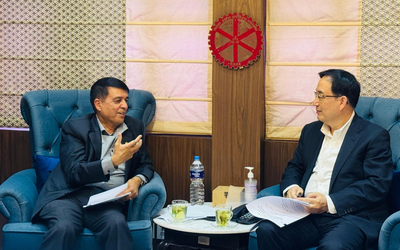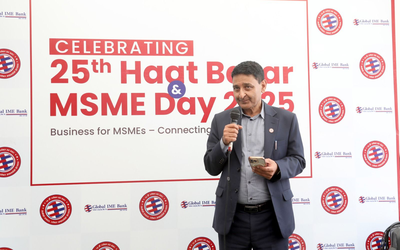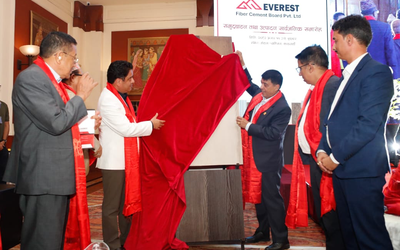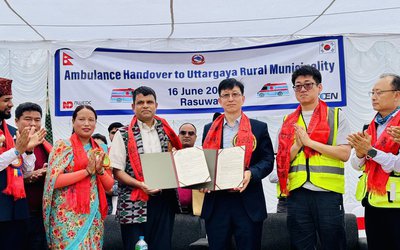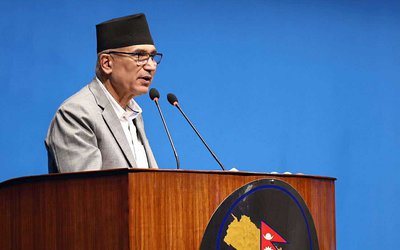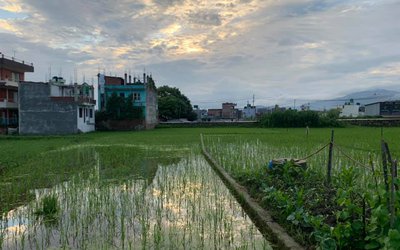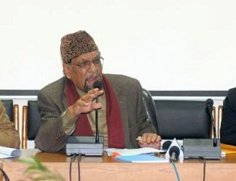
As Nepal’s political instability prolongs, even the timely introduction of the budget and improving investment environment have failed to show progress in economic indicators.
Just a week after the release of a mid-term review, Asian Development Bank's Economic Update reveals that Nepal’s economic growth rate and other indicators are not moving in the right direction.
Huge trade deficit, reluctance of investors and lowering remittances will have impact in the progress of the economy. Similarly, the low capital investment of around 12 percent is also a matter of concern.
Although the budget had targeted an economic growth of six percent, the mid-term review of fiscal policy says economic growth will hover above 5 percent. In the last fiscal year, national economy had grown by 5.2 percent.
However, the Micro-Economic Update released by Asian Development Bank disclosed that the economic growth will be around 4.5 percent. Given the current political scenario, foreign investment is likely to remain stagnant.
According to the Micro-Economic Update, the real sector scenario is not encouraging in the wake of late sub-normal monsoon, political uncertainty, reported deceleration of remittance flows and large gap between investment commitments and actual inflows.
Similarly, the fiscal sector scenario is also not performing well either. According to ADB, budget utilization is lower than midyear 2014, that is, the 12.6 percent capital budget utilization rate is lower than last year’s 13.5 percent. High bunching of capital spending expected, robust revenue performance and increasing budget surplus are some other indicators to show economic scenario.
The government too agrees that things are not going well. “Trade deficit is widening at an alarming rate, and there has not been an expected growth on capital spending,” said the government’s midterm review.
At a time when the government needs to spend more money in development sector to achieve high growth, the government is sitting on cash pile of more than Rs 90 million allocated for development spending. The government report states that the government has managed to spend only 12 percent of the allocated fund so far.
However, the mid-term review report says growth rate in industry and service industry is improving, but untimely monsoon and floods have affected agriculture production. “Inflation currently stands at 7.3 percent, compared to 10 percent recorded in the last fiscal year. Similarly, revenue collection stands at a little above the target of Rs 185 billion set for the period,” said the report.
Presenting the outlook, Chandan Sapkota, Asian Development Bank’s economist said that there is a need for higher capital investment.
"Authorization for spending was issued on the first day of the fiscal year," said Minister for Finance Ram Sharan Mahat, unveiling the report. "But the tendency to wait for budget approval from the parliament and lack of serious planning and budgeting as well as lack of zeal in designing programs and spending affected developing spending in the first half of the current fiscal year."
The government has been cautiously monitoring budget spending and ministries have been told to sign multi-year contract for projects approved by National Planning Commission (NPC).
Despite availability of adequate resources, ministries are unable to accelerate capital expenditure. Most of the infrastructure projects are stalled.
"Ministries were not serious about seeking timely approval of budget programs,” said Govinda Raj Pokharel, vice chairman of National Planning Commission. "That is why we have introduced a fast-track mode for approval of development programs.”
Out of 21 priority projects, only Pushpa Lal Rajmarg and Upper Tamakoshi hydropower projects are making good progress. Delay in budget release, unnecessary and frequent intervention by anti corruption watch body and political intervention have affected most others.
The mid-term review report, however, estimates that capital spending will increase in the second half of the fiscal year. It has projected that capital spending will stand at 92 percent (Rs 558 billion) of the allocated Rs 618 billion.
As trade deficit is going alarmingly high, reducing the deficit, which is expected to reach Rs 700 billion by the end of the current fiscal year, would be a big challenge.
According to the data, Nepal imported goods worth Rs 378.22 billion in the first six months of 2014/15 ending mid-January. Export income in the review period stood at Rs 43.39 billion.
Since assuming office a year ago, finance minister Dr. Mahat has initiated several economic reforms measures. Prolonged political instability is hampering the process of reform. Due to political deadlock, half a dozen financial laws, including amendments to Nepal Rastra Bank Bill, Industrial Enterprise Bill, Banking Offence and Punishment Bill, Public Procurement Bill, were in the process of getting cabinet nod. These are important for economic reforms.
The government had announced its plan to enact half a dozen new laws and amend existing laws to give a boost to economy. But no such law has been tabled in the parliament.
One of the positive aspects of the current fiscal year is high commitments from Nepal’s development partners to support Nepal. "The country has received a record high foreign aid commitment of Rs 217 billion in the review period which was only Rs 55 billion in the corresponding period of last fiscal year,” said Finance Minister Mahat.
One of the positive sides of economy is the decline in inflation. According to Asian Development Bank’s Micro Economic Update, inflation averaged 7.3 percent in the first half of fiscal year 2015 down from 9.1 percent in the corresponding period in FY 2014. The decline in price is mainly driven by the sharp slowdown in non-food and service prices. However, the persistence of the high inflation level is supported by the still high food and beverage prices, which averaged 10.1 percent in the first half of Fiscal Year 2015 against 11.5 percent in the same period in Fiscal Year 2014. Considering the sharp drop on non food prices and moderating food prices, inflation is forecast to be between 7.0 percent to 8.0 percent in fiscal year 2015.
Going by the two reports released recently on Nepal’s economic progress, they show that the government needs to take certain drastic step to improve the overall economic progress, particularly increasing the capital expenditure at a much higher pace.
With huge surplus budget and growing foreign aid commitments, Nepal’s overall economic progress will be determined by the ability of the government to enhance the present rate of capital expenditure.
- MELAMCHI WATER SUPPLY: No Interruption During Monsoon
- Jun 25, 2025
- KOREAN RETURNEES: Successful Integration
- Jun 25, 2025
- UPPER TRISHULI-1: Engaging With Local
- Jun 25, 2025
- IME GROUP: Twenty Five Years Of Journey
- Jun 24, 2025
- NEPAL’S AIR POLLUTION: A Growing Health Concern
- Jun 24, 2025

